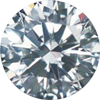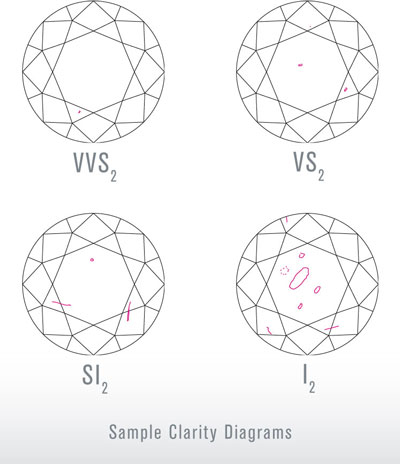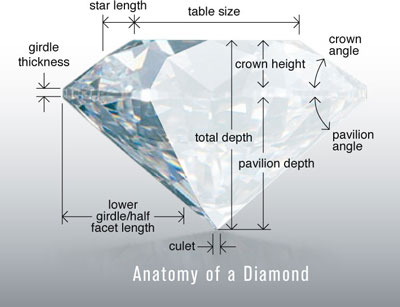- EDUCATION
- SERVICES
How GIA Grades Your Diamond
 Independent and non-profit, GIA is considered the final word on a diamond’s authenticity and quality. GIA developed the 4Cs and the International Diamond Grading System™, the grading standard adopted by jewelry professionals around the globe. GIA screens every gemstone to identify synthetics, stimulants and known treatments. Expert gemologists examine each diamond under controlled lighting and viewing conditions, in order to provide the most rigorous assessments of a diamond’s 4Cs. Ever y GIA Diamond Grading Report or Diamond Dossier® contains these assessments along with additional descriptive information and state-of the-art security features. Regarded as premier gemological credentials by international gem professionals and fine jewelry houses, GIA Reports accompany the world’s most legendary diamonds and now, quite possibly, yours.
Independent and non-profit, GIA is considered the final word on a diamond’s authenticity and quality. GIA developed the 4Cs and the International Diamond Grading System™, the grading standard adopted by jewelry professionals around the globe. GIA screens every gemstone to identify synthetics, stimulants and known treatments. Expert gemologists examine each diamond under controlled lighting and viewing conditions, in order to provide the most rigorous assessments of a diamond’s 4Cs. Ever y GIA Diamond Grading Report or Diamond Dossier® contains these assessments along with additional descriptive information and state-of the-art security features. Regarded as premier gemological credentials by international gem professionals and fine jewelry houses, GIA Reports accompany the world’s most legendary diamonds and now, quite possibly, yours.
The 4C's
Color
The GIA Color Scale extends from D (colorless) to Z (light yellow or brown). Although many people think of gem quality diamonds as colorless, truly colorless diamonds are actually very rare. Most diamonds used in jewelry are nearly colorless with tints of yellow or brown. Color grades are determined by comparing each diamond to a master set. Each letter grade represents a range of color and is a measure of how noticeable a color is.

Fluorescence Some diamonds can emit a visible light when exposed to ultraviolet radiation, but fluorescence is not a factor in determining color or clarity grades. However, a description of its strength and color is provided on GIA Reports as an additional identifying characteristic.
Clarity
The GIA Clarity Scale includes eleven clarity grades ranging from Flawless to I2. Because diamonds form under tremendous heat and pressure, it is extremely rare to find a diamond that lacks any internal and external characteristics. These characteristics are a by product of its formation and help gemologists separate natural diamonds from synthetics and simulants, and identify individual stones.

Cut
The GIA Cut Scale ranges from Excellent to Poor. GIA provides a cut quality grade for standard round brilliant diamonds that fall in the GIA D-to-Z color range.
A polished diamond’s beauty lies in its complex relationship with light: how light strikes the surface, how much enters the diamond, and how, and in what form light returns to your eye.
The result is a magnificent display of three attributes. Brightness is the combination of all white light reflecting from the surface and interior of a diamond. Fire describes the “flares” of color emitted from a diamond. Scintillation describes the flashes of light you see when the diamond, the light, or the observer moves.
A polished diamond’s proportions affect its light performance, which in turn affects its beauty and overall appeal. Diamonds with fine proportions, symmetry, and polish optimize their interaction with light, and have increased brightness, fire, and scintillation.
A polished diamond’s beauty lies in its complex relationship with light: how light strikes the surface, how much enters the diamond, and how, and in what form light returns to your eye.
The result is a magnificent display of three attributes. Brightness is the combination of all white light reflecting from the surface and interior of a diamond. Fire describes the “flares” of color emitted from a diamond. Scintillation describes the flashes of light you see when the diamond, the light, or the observer moves.
A polished diamond’s proportions affect its light performance, which in turn affects its beauty and overall appeal. Diamonds with fine proportions, symmetry, and polish optimize their interaction with light, and have increased brightness, fire, and scintillation.

Carat Weight
One carat equals 200 milligrams in weight. For diamonds under one carat, each carat is divided into 100 points – similar to pennies in a dollar. 0.75 ct. = 75 points, 1/2 ct. = 50 points.

Scales



We believe in exceptional customer service, one-on-one, dedicated to offering you the best assistance and the fastest service.
If you found a certain diamond that interests you and you want more information, or you would like to order the diamond or enquire about price options, please send us a diamond request order.
If you have not found what you are looking for, please send us a Special Request, and we will try to assist you in finding the desired diamond. We do our best to satisfy all our customers.
We can Laser Inscribe your diamond for a nominal fee. This Laser Inscription is hidden to the naked eye, yet clearly visible through magnification. The latest laser technology ensures the lustre and clarity of your diamond will not be affected.
We provide custom diamond cutting and repair on all cuts, shapes and sizes. At competitive prices.